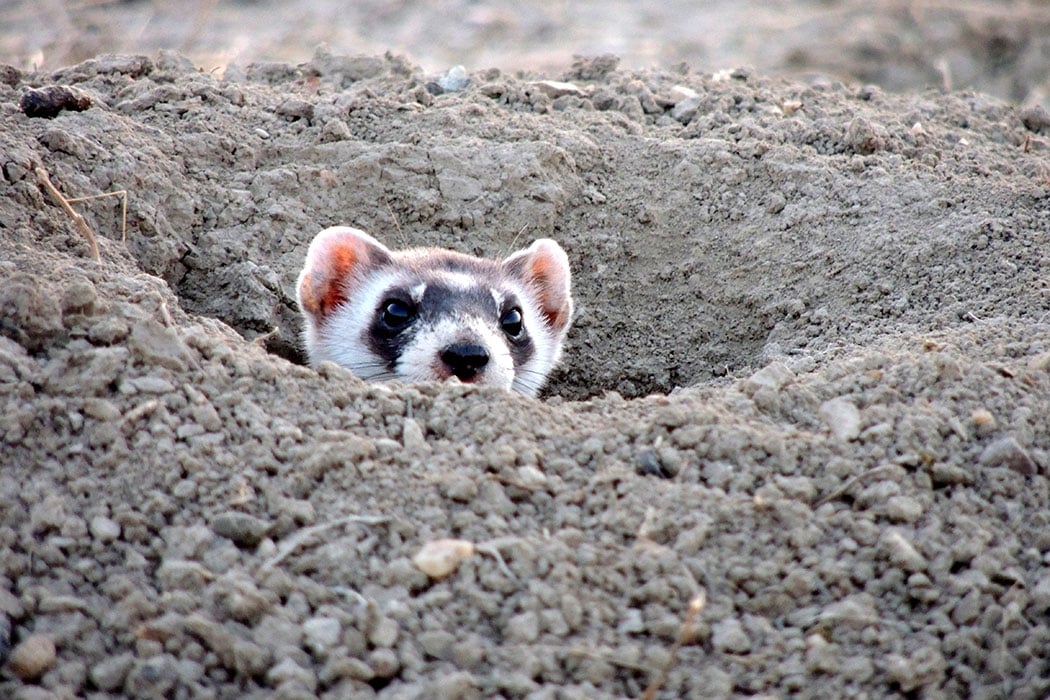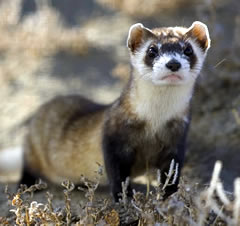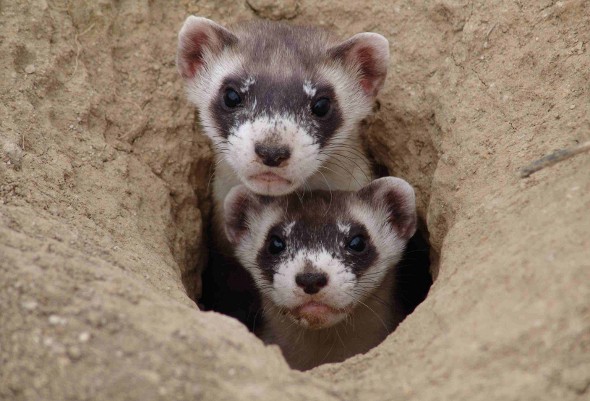Source google.com.pk
Black-Footed Ferret
The black-footed ferret could also be called the black-eyed ferret because of the distinctive "stick-em up" mask that adorns its face. The tan ferrets also have black markings on their feet, legs, and tail tip.
This animal's long slender body, like that of a weasel, enables it to crawl in and out of the holes and dwellings of its primary prey—the prairie dog.
Though black-footed ferrets sometimes eat squirrels, mice, and other rodents, prairie dogs are essential to their survival, making up the majority of the ferret diet. These voracious predators hunt them in their own burrows, and take shelter in abandoned prairie dog dwellings.
Many prairie dog towns became ghost towns as populations underwent a 20th century decline. Farmers and ranchers (with government assistance) eliminated many prairie dogs because their underground complexes are destructive to fields. In the process, the black-footed ferret was nearly wiped out. In 1987, 18 animals were captured in the wild to begin a captive breeding program, which has since reintroduced ferrets into promising western habitats.
Ferret reintroduction efforts have been mixed. Populations need viable prairie dog towns to survive, but they also face threats from predators such as golden eagles, owls, and coyotes. Reintroduced animals lack some survival skills so their mortality rate is high. Diseases are another major threat to prairie dog towns and to the black-footed ferrets that depend upon them.
These solitary animals live alone, and in May and June females give birth to litters of one to six kits that they raise alone. The young are able to survive on their own by fall.






Black-Footed Ferret
The black-footed ferret could also be called the black-eyed ferret because of the distinctive "stick-em up" mask that adorns its face. The tan ferrets also have black markings on their feet, legs, and tail tip.
This animal's long slender body, like that of a weasel, enables it to crawl in and out of the holes and dwellings of its primary prey—the prairie dog.
Though black-footed ferrets sometimes eat squirrels, mice, and other rodents, prairie dogs are essential to their survival, making up the majority of the ferret diet. These voracious predators hunt them in their own burrows, and take shelter in abandoned prairie dog dwellings.
Many prairie dog towns became ghost towns as populations underwent a 20th century decline. Farmers and ranchers (with government assistance) eliminated many prairie dogs because their underground complexes are destructive to fields. In the process, the black-footed ferret was nearly wiped out. In 1987, 18 animals were captured in the wild to begin a captive breeding program, which has since reintroduced ferrets into promising western habitats.
Ferret reintroduction efforts have been mixed. Populations need viable prairie dog towns to survive, but they also face threats from predators such as golden eagles, owls, and coyotes. Reintroduced animals lack some survival skills so their mortality rate is high. Diseases are another major threat to prairie dog towns and to the black-footed ferrets that depend upon them.
These solitary animals live alone, and in May and June females give birth to litters of one to six kits that they raise alone. The young are able to survive on their own by fall.
Black-Footed Ferret

Black-Footed Ferret

Black-Footed Ferret

Black-Footed Ferret

Black-Footed Ferret

Black-Footed Ferret

Black-Footed Ferret

No comments:
Post a Comment